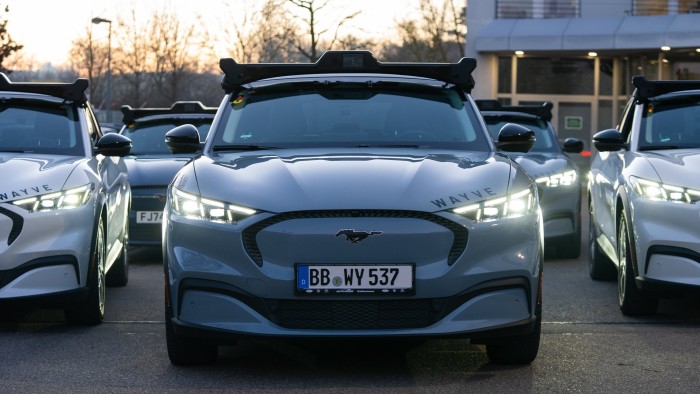Unlock the Editor’s Digest for free
Roula Khalaf, Editor of the FT, selects her favourite stories in this weekly newsletter.
Wayve, the London-based autonomous driving start-up, will install its software in vehicles made by Japan’s Nissan from 2027, marking its first deal with a global carmaker.
The agreement with Nissan is a key milestone for Wayve as it aims to accelerate its international expansion after raising more than $1bn from investors including SoftBank, Microsoft and Nvidia last year.
Nissan said its new “ProPilot” semi-autonomous system would combine the use of camera, lidar sensor and radar with Wayve’s “Level 2” advanced driver assistance software, industry terminology for a capability that still requires active monitoring by a human driver behind the wheel.
“The system . . . will set a new standard for autonomous driving with advanced collision avoidance capability,” Nissan said in a statement on Thursday.
Founded in 2017, Wayve has emerged as one of the UK’s highest-profile companies in artificial intelligence. It is also seen as Europe’s best hope in autonomous driving, as US-based Tesla and Waymo race against Chinese rivals including electric-vehicle maker BYD and robotaxis from Baidu, WeRide and Pony.ai.
Wayve’s AI system allows vehicles to learn while driving, avoiding the need for high-priced sensors and high-definition 3D maps. It claims it will eventually be able to offer similar capabilities at a fraction of the cost of Alphabet-owned Waymo’s vehicles, which currently require expensive sensors and computing equipment to ensure that its fully driverless system operates safely.
The company has been in talks with several carmakers about using its systems in the coming years and does not plan to launch its own fleet of vehicles.
Japan is a natural target for Wayve’s global expansion considering its ties with SoftBank. Despite being the world’s fourth-largest automotive market, the country has lagged behind in electric vehicles and self-driving technology compared with China or the US.
Nissan, which makes the Leaf, Rogue and Micra, has long been developing self-driving technology using lidar cameras to build up a 3D picture of the car’s surroundings. But the company has faced ballooning costs of developing software especially as it wrestles with a financial crisis that has triggered the recent exit of its chief executive.
In December, General Motors also shut down development of its Cruise robotaxi, citing the “considerable time and resources that would be needed to scale the business” after pouring more than $10bn into the venture since 2016.
At a recent presentation on Nissan’s efforts in autonomous driving, Takashi Yoshizawa, head of Nissan’s software-defined vehicle division, said the use of generative AI would accelerate autonomous driving by enabling depth perception while large language models would lead to higher predictability.
But Yoshizawa admitted that the cost of developing software was “exploding” for car producers.


